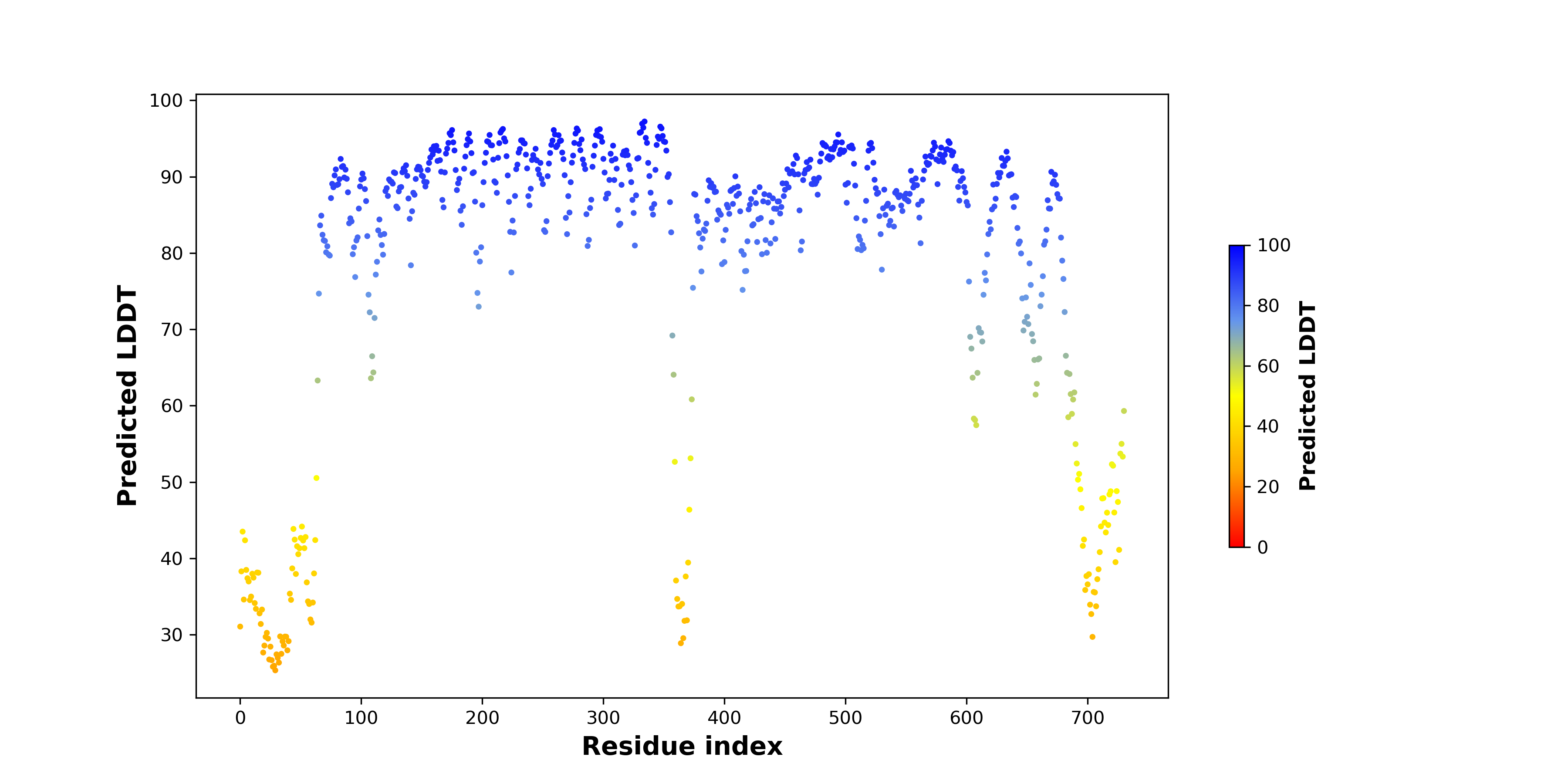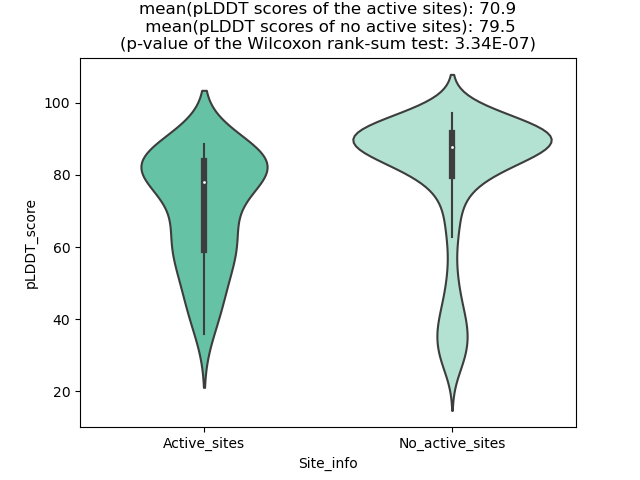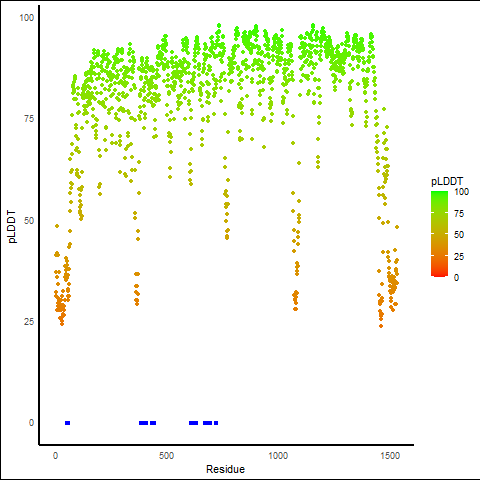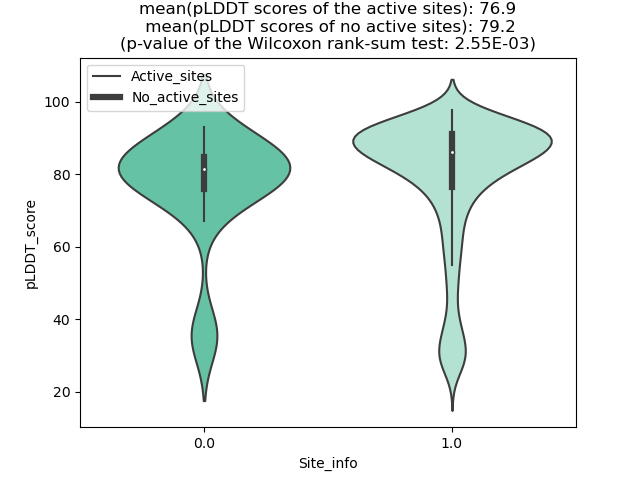| UTHEALTH HOME ABOUT SBMI A-Z WEBMAIL INSIDE THE UNIVERSITY |

|
|||||||
|
Fusion Protein:IL6R-ATP8B2 |
Fusion Protein Summary |
 Fusion gene summary Fusion gene summary |
| Fusion partner gene information | Fusion gene name: IL6R-ATP8B2 | FusionPDB ID: 39572 | FusionGDB2.0 ID: 39572 | Hgene | Tgene | Gene symbol | IL6R | ATP8B2 | Gene ID | 3570 | 57198 |
| Gene name | interleukin 6 receptor | ATPase phospholipid transporting 8B2 | |
| Synonyms | CD126|IL-6R-1|IL-6RA|IL6Q|IL6RA|IL6RQ|gp80 | ATPID | |
| Cytomap | 1q21.3 | 1q21.3 | |
| Type of gene | protein-coding | protein-coding | |
| Description | interleukin-6 receptor subunit alphaCD126 antigenIL-6 receptor subunit alphaIL-6R 1membrane glycoprotein 80 | phospholipid-transporting ATPase ID36/8-9 fusion protein with epitope for anti-lectin antibodyATPase, aminophospholipid transporter, class I, type 8B, member 2ATPase, class I, type 8B, member 2P4-ATPase flippase complex alpha subunit ATP8B2probable p | |
| Modification date | 20200313 | 20200313 | |
| UniProtAcc | P08887 | P98198 | |
| Ensembl transtripts involved in fusion gene | ENST ids | ENST00000507256, ENST00000344086, ENST00000368485, | ENST00000368487, ENST00000368489, ENST00000341822, ENST00000426445, |
| Fusion gene scores for assessment (based on all fusion genes of FusionGDB 2.0) | * DoF score | 5 X 6 X 5=150 | 2 X 3 X 2=12 |
| # samples | 6 | 2 | |
| ** MAII score | log2(6/150*10)=-1.32192809488736 possibly effective Gene in Pan-Cancer Fusion Genes (peGinPCFGs). DoF>8 and MAII<0 | log2(2/12*10)=0.736965594166206 effective Gene in Pan-Cancer Fusion Genes (eGinPCFGs). DoF>8 and MAII>0 | |
| Context (manual curation of fusion genes in FusionPDB) | PubMed: IL6R [Title/Abstract] AND ATP8B2 [Title/Abstract] AND fusion [Title/Abstract] | ||
| Most frequent breakpoint (based on all fusion genes of FusionGDB 2.0) | |||
| Anticipated loss of major functional domain due to fusion event. | IL6R-ATP8B2 seems lost the major protein functional domain in Hgene partner, which is a IUPHAR drug target due to the frame-shifted ORF. IL6R-ATP8B2 seems lost the major protein functional domain in Tgene partner, which is a essential gene due to the frame-shifted ORF. IL6R-ATP8B2 seems lost the major protein functional domain in Tgene partner, which is a IUPHAR drug target due to the frame-shifted ORF. | ||
| * DoF score (Degree of Frequency) = # partners X # break points X # cancer types ** MAII score (Major Active Isofusion Index) = log2(# samples/DoF score*10) |
 Gene ontology of each fusion partner gene with evidence of Inferred from Direct Assay (IDA) from Entrez Gene ontology of each fusion partner gene with evidence of Inferred from Direct Assay (IDA) from Entrez |
| Partner | Gene | GO ID | GO term | PubMed ID |
| Hgene | IL6R | GO:0008284 | positive regulation of cell proliferation | 2261637 |
| Hgene | IL6R | GO:0019221 | cytokine-mediated signaling pathway | 2261637 |
| Hgene | IL6R | GO:0032722 | positive regulation of chemokine production | 10510402 |
| Hgene | IL6R | GO:0032755 | positive regulation of interleukin-6 production | 10510402 |
| Hgene | IL6R | GO:0034097 | response to cytokine | 2261637 |
| Hgene | IL6R | GO:0048661 | positive regulation of smooth muscle cell proliferation | 10510402 |
| Hgene | IL6R | GO:0050731 | positive regulation of peptidyl-tyrosine phosphorylation | 11884403 |
 Fusion gene breakpoints across IL6R (5'-gene) Fusion gene breakpoints across IL6R (5'-gene)* Click on the image to open the UCSC genome browser with custom track showing this image in a new window. |
 Fusion gene breakpoints across ATP8B2 (3'-gene) Fusion gene breakpoints across ATP8B2 (3'-gene)* Click on the image to open the UCSC genome browser with custom track showing this image in a new window. |
Top |
Fusion Gene Sample Information |
 Fusion gene information from FusionGDB2.0. Fusion gene information from FusionGDB2.0. |
 Fusion gene information from two resources (ChiTars 5.0 and ChimerDB 4.0) Fusion gene information from two resources (ChiTars 5.0 and ChimerDB 4.0)* All genome coordinats were lifted-over on hg19. * Click on the break point to see the gene structure around the break point region using the UCSC Genome Browser. |
| Source | Disease | Sample | Hgene | Hchr | Hbp | Hstrand | Tgene | Tchr | Tbp | Tstrand |
| ChimerKB3 | . | . | IL6R | chr1 | 154420647 | + | ATP8B2 | chr1 | 154302871 | + |
| ChimerKB3 | . | . | IL6R | chr1 | 154420647 | + | ATP8B2 | chr1 | 154303290 | + |
Top |
Fusion ORF Analysis |
 Fusion information from ORFfinder translation from full-length transcript sequence from FusionPDB. Fusion information from ORFfinder translation from full-length transcript sequence from FusionPDB. |
| Henst | Tenst | Hgene | Hchr | Hbp | Hstrand | Tgene | Tchr | Tbp | Tstrand | Seq length (transcript) | BP loci (transcript) | Predicted start (transcript) | Predicted stop (transcript) | Seq length (amino acids) |
| ENST00000368485 | IL6R | chr1 | 154420647 | + | ENST00000368487 | ATP8B2 | chr1 | 154303290 | + | 2679 | 1433 | 311 | 2506 | 731 |
| ENST00000368485 | IL6R | chr1 | 154420647 | + | ENST00000368489 | ATP8B2 | chr1 | 154303290 | + | 7105 | 1433 | 311 | 4915 | 1534 |
| ENST00000344086 | IL6R | chr1 | 154420647 | + | ENST00000368487 | ATP8B2 | chr1 | 154303290 | + | 2649 | 1403 | 281 | 2476 | 731 |
| ENST00000344086 | IL6R | chr1 | 154420647 | + | ENST00000368489 | ATP8B2 | chr1 | 154303290 | + | 7075 | 1403 | 281 | 4885 | 1534 |
 DeepORF prediction of the coding potential based on the fusion transcript sequence of in-frame fusion genes. DeepORF is a coding potential classifier based on convolutional neural network by comparing the real Ribo-seq data. If the no-coding score < 0.5 and coding score > 0.5, then the in-frame fusion transcript is predicted as being likely translated. DeepORF prediction of the coding potential based on the fusion transcript sequence of in-frame fusion genes. DeepORF is a coding potential classifier based on convolutional neural network by comparing the real Ribo-seq data. If the no-coding score < 0.5 and coding score > 0.5, then the in-frame fusion transcript is predicted as being likely translated. |
| Henst | Tenst | Hgene | Hchr | Hbp | Hstrand | Tgene | Tchr | Tbp | Tstrand | No-coding score | Coding score |
Top |
Fusion Amino Acid Sequences |
 For individual full-length fusion transcript sequence from FusionPDB, we ran ORFfinder and chose the longest ORF among the all predicted ones. For individual full-length fusion transcript sequence from FusionPDB, we ran ORFfinder and chose the longest ORF among the all predicted ones. |
| >FusionGDB ID_FusionGDB isoform ID_FGname_Hgene_Hchr_Hbp_Henst_Tgene_Tchr_Tbp_Tenst_length(fusion AA) seq_BP >39572_39572_1_IL6R-ATP8B2_IL6R_chr1_154420647_ENST00000344086_ATP8B2_chr1_154303290_ENST00000368487_length(amino acids)=731AA_BP=374 MPPGPEPACPPTAPPRPCHPCRPVPISLSASAGPWSGSRGGSMLAVGCALLAALLAAPGAALAPRRCPAQEVARGVLTSLPGDSVTLTCP GVEPEDNATVHWVLRKPAAGSHPSRWAGMGRRLLLRSVQLHDSGNYSCYRAGRPAGTVHLLVDVPPEEPQLSCFRKSPLSNVVCEWGPRS TPSLTTKAVLLVRKFQNSPAEDFQEPCQYSQESQKFSCQLAVPEGDSSFYIVSMCVASSVGSKFSKTQTFQGCGILQPDPPANITVTAVA RNPRWLSVTWQDPHSWNSSFYRLRFELRYRAERSKTFTTWMVKDLQHHCVIHDAWSGLRHVVQLRAQEEFGQGEWSEWSPEAMGTPWTES RSPPAENEVSTPMQSNCIKTSKYNILTFLPVNLFEQFQEVANTYFLFLLILQLIPQISSLSWFTTIVPLVLVLTITAVKDATDDYFRHKS DNQVNNRQSQVLINGILQQEQWMNVCVGDIIKLENNQFVAADLLLLSSSEPHGLCYIETAELDGETNMKVRQAIPVTSELGDISKLAKFD GEVICEPPNNKLDKFSGTLYWKENKFPLSNQNMLLRGCVLRNTEWCFGLVIFAGPDTKLMQNSGRTKFKRTSIDRLMNTLVLWIFGFLVC MGVILAIGNAIWEHEVGMRFQVYLPWDEAVDSAFFSGFLSFWSYIIILNTVVPISLYVRYVPSLTWGLSRESGGPIELFFSMKMKSLRSN -------------------------------------------------------------- >39572_39572_2_IL6R-ATP8B2_IL6R_chr1_154420647_ENST00000344086_ATP8B2_chr1_154303290_ENST00000368489_length(amino acids)=1534AA_BP=374 MPPGPEPACPPTAPPRPCHPCRPVPISLSASAGPWSGSRGGSMLAVGCALLAALLAAPGAALAPRRCPAQEVARGVLTSLPGDSVTLTCP GVEPEDNATVHWVLRKPAAGSHPSRWAGMGRRLLLRSVQLHDSGNYSCYRAGRPAGTVHLLVDVPPEEPQLSCFRKSPLSNVVCEWGPRS TPSLTTKAVLLVRKFQNSPAEDFQEPCQYSQESQKFSCQLAVPEGDSSFYIVSMCVASSVGSKFSKTQTFQGCGILQPDPPANITVTAVA RNPRWLSVTWQDPHSWNSSFYRLRFELRYRAERSKTFTTWMVKDLQHHCVIHDAWSGLRHVVQLRAQEEFGQGEWSEWSPEAMGTPWTES RSPPAENEVSTPMQSNCIKTSKYNILTFLPVNLFEQFQEVANTYFLFLLILQLIPQISSLSWFTTIVPLVLVLTITAVKDATDDYFRHKS DNQVNNRQSQVLINGILQQEQWMNVCVGDIIKLENNQFVAADLLLLSSSEPHGLCYIETAELDGETNMKVRQAIPVTSELGDISKLAKFD GEVICEPPNNKLDKFSGTLYWKENKFPLSNQNMLLRGCVLRNTEWCFGLVIFAGPDTKLMQNSGRTKFKRTSIDRLMNTLVLWIFGFLVC MGVILAIGNAIWEHEVGMRFQVYLPWDEAVDSAFFSGFLSFWSYIIILNTVVPISLYVSVEVIRLGHSYFINWDKKMFCMKKRTPAEART TTLNEELGQVEYIFSDKTGTLTQNIMVFNKCSINGHSYGDVFDVLGHKAELGERPEPVDFSFNPLADKKFLFWDPSLLEAVKIGDPHTHE FFRLLSLCHTVMSEEKNEGELYYKAQSPDEGALVTAARNFGFVFRSRTPKTITVHEMGTAITYQLLAILDFNNIRKRMSVIVRNPEGKIR LYCKGADTILLDRLHHSTQELLNTTMDHLNEYAGEGLRTLVLAYKDLDEEYYEEWAERRLQASLAQDSREDRLASIYEEVENNMMLLGAT AIEDKLQQGVPETIALLTLANIKIWVLTGDKQETAVNIGYSCKMLTDDMTEVFIVTGHTVLEVREELRKAREKMMDSSRSVGNGFTYQDK LSSSKLTSVLEAVAGEYALVINGHSLAHALEADMELEFLETACACKAVICCRVTPLQKAQVVELVKKYKKAVTLAIGDGANDVSMIKTAH IGVGISGQEGIQAVLASDYSFSQFKFLQRLLLVHGRWSYLRMCKFLCYFFYKNFAFTMVHFWFGFFCGFSAQTVYDQYFITLYNIVYTSL PVLAMGVFDQDVPEQRSMEYPKLYEPGQLNLLFNKREFFICIAQGIYTSVLMFFIPYGVFADATRDDGTQLADYQSFAVTVATSLVIVVS VQIGLDTGYWTAINHFFIWGSLAVYFAILFAMHSNGLFDMFPNQFRFVGNAQNTLAQPTVWLTIVLTTVVCIMPVVAFRFLRLNLKPDLS DTVRYTQLVRKKQKAQHRCMRRVGRTGSRRSGYAFSHQEGFGELIMSGKNMRLSSLALSSFTTRSSSSWIESLRRKKSDSASSPSGGADK -------------------------------------------------------------- >39572_39572_3_IL6R-ATP8B2_IL6R_chr1_154420647_ENST00000368485_ATP8B2_chr1_154303290_ENST00000368487_length(amino acids)=731AA_BP=374 MPPGPEPACPPTAPPRPCHPCRPVPISLSASAGPWSGSRGGSMLAVGCALLAALLAAPGAALAPRRCPAQEVARGVLTSLPGDSVTLTCP GVEPEDNATVHWVLRKPAAGSHPSRWAGMGRRLLLRSVQLHDSGNYSCYRAGRPAGTVHLLVDVPPEEPQLSCFRKSPLSNVVCEWGPRS TPSLTTKAVLLVRKFQNSPAEDFQEPCQYSQESQKFSCQLAVPEGDSSFYIVSMCVASSVGSKFSKTQTFQGCGILQPDPPANITVTAVA RNPRWLSVTWQDPHSWNSSFYRLRFELRYRAERSKTFTTWMVKDLQHHCVIHDAWSGLRHVVQLRAQEEFGQGEWSEWSPEAMGTPWTES RSPPAENEVSTPMQSNCIKTSKYNILTFLPVNLFEQFQEVANTYFLFLLILQLIPQISSLSWFTTIVPLVLVLTITAVKDATDDYFRHKS DNQVNNRQSQVLINGILQQEQWMNVCVGDIIKLENNQFVAADLLLLSSSEPHGLCYIETAELDGETNMKVRQAIPVTSELGDISKLAKFD GEVICEPPNNKLDKFSGTLYWKENKFPLSNQNMLLRGCVLRNTEWCFGLVIFAGPDTKLMQNSGRTKFKRTSIDRLMNTLVLWIFGFLVC MGVILAIGNAIWEHEVGMRFQVYLPWDEAVDSAFFSGFLSFWSYIIILNTVVPISLYVRYVPSLTWGLSRESGGPIELFFSMKMKSLRSN -------------------------------------------------------------- >39572_39572_4_IL6R-ATP8B2_IL6R_chr1_154420647_ENST00000368485_ATP8B2_chr1_154303290_ENST00000368489_length(amino acids)=1534AA_BP=374 MPPGPEPACPPTAPPRPCHPCRPVPISLSASAGPWSGSRGGSMLAVGCALLAALLAAPGAALAPRRCPAQEVARGVLTSLPGDSVTLTCP GVEPEDNATVHWVLRKPAAGSHPSRWAGMGRRLLLRSVQLHDSGNYSCYRAGRPAGTVHLLVDVPPEEPQLSCFRKSPLSNVVCEWGPRS TPSLTTKAVLLVRKFQNSPAEDFQEPCQYSQESQKFSCQLAVPEGDSSFYIVSMCVASSVGSKFSKTQTFQGCGILQPDPPANITVTAVA RNPRWLSVTWQDPHSWNSSFYRLRFELRYRAERSKTFTTWMVKDLQHHCVIHDAWSGLRHVVQLRAQEEFGQGEWSEWSPEAMGTPWTES RSPPAENEVSTPMQSNCIKTSKYNILTFLPVNLFEQFQEVANTYFLFLLILQLIPQISSLSWFTTIVPLVLVLTITAVKDATDDYFRHKS DNQVNNRQSQVLINGILQQEQWMNVCVGDIIKLENNQFVAADLLLLSSSEPHGLCYIETAELDGETNMKVRQAIPVTSELGDISKLAKFD GEVICEPPNNKLDKFSGTLYWKENKFPLSNQNMLLRGCVLRNTEWCFGLVIFAGPDTKLMQNSGRTKFKRTSIDRLMNTLVLWIFGFLVC MGVILAIGNAIWEHEVGMRFQVYLPWDEAVDSAFFSGFLSFWSYIIILNTVVPISLYVSVEVIRLGHSYFINWDKKMFCMKKRTPAEART TTLNEELGQVEYIFSDKTGTLTQNIMVFNKCSINGHSYGDVFDVLGHKAELGERPEPVDFSFNPLADKKFLFWDPSLLEAVKIGDPHTHE FFRLLSLCHTVMSEEKNEGELYYKAQSPDEGALVTAARNFGFVFRSRTPKTITVHEMGTAITYQLLAILDFNNIRKRMSVIVRNPEGKIR LYCKGADTILLDRLHHSTQELLNTTMDHLNEYAGEGLRTLVLAYKDLDEEYYEEWAERRLQASLAQDSREDRLASIYEEVENNMMLLGAT AIEDKLQQGVPETIALLTLANIKIWVLTGDKQETAVNIGYSCKMLTDDMTEVFIVTGHTVLEVREELRKAREKMMDSSRSVGNGFTYQDK LSSSKLTSVLEAVAGEYALVINGHSLAHALEADMELEFLETACACKAVICCRVTPLQKAQVVELVKKYKKAVTLAIGDGANDVSMIKTAH IGVGISGQEGIQAVLASDYSFSQFKFLQRLLLVHGRWSYLRMCKFLCYFFYKNFAFTMVHFWFGFFCGFSAQTVYDQYFITLYNIVYTSL PVLAMGVFDQDVPEQRSMEYPKLYEPGQLNLLFNKREFFICIAQGIYTSVLMFFIPYGVFADATRDDGTQLADYQSFAVTVATSLVIVVS VQIGLDTGYWTAINHFFIWGSLAVYFAILFAMHSNGLFDMFPNQFRFVGNAQNTLAQPTVWLTIVLTTVVCIMPVVAFRFLRLNLKPDLS DTVRYTQLVRKKQKAQHRCMRRVGRTGSRRSGYAFSHQEGFGELIMSGKNMRLSSLALSSFTTRSSSSWIESLRRKKSDSASSPSGGADK -------------------------------------------------------------- |
Top |
Fusion Protein Functional Features |
 Four levels of functional features of fusion genes Four levels of functional features of fusion genesGo to FGviewer search page for the most frequent breakpoint (https://ccsmweb.uth.edu/FGviewer/chr1:/chr1:) - FGviewer provides the online visualization of the retention search of the protein functional features across DNA, RNA, protein, and pathological levels. - How to search 1. Put your fusion gene symbol. 2. Press the tab key until there will be shown the breakpoint information filled. 4. Go down and press 'Search' tab twice. 4. Go down to have the hyperlink of the search result. 5. Click the hyperlink. 6. See the FGviewer result for your fusion gene. |
 |
 Main function of each fusion partner protein. (from UniProt) Main function of each fusion partner protein. (from UniProt) |
| Hgene | Tgene |
| IL6R | ATP8B2 |
| FUNCTION: Part of the receptor for interleukin 6. Binds to IL6 with low affinity, but does not transduce a signal (PubMed:28265003). Signal activation necessitate an association with IL6ST. Activation leads to the regulation of the immune response, acute-phase reactions and hematopoiesis (PubMed:30995492, PubMed:31235509). The interaction with membrane-bound IL6R and IL6ST stimulates 'classic signaling', the restricted expression of the IL6R limits classic IL6 signaling to only a few tissues such as the liver and some cells of the immune system. Whereas the binding of IL6 and soluble IL6R to IL6ST stimulates 'trans-signaling'. Alternatively, 'cluster signaling' occurs when membrane-bound IL6:IL6R complexes on transmitter cells activate IL6ST receptors on neighboring receiver cells (Probable). {ECO:0000269|PubMed:28265003, ECO:0000269|PubMed:31235509, ECO:0000305|PubMed:30995492}.; FUNCTION: [Isoform 1]: Signaling via the membrane-bound IL6R is mostly regenerative and anti-inflammatory (Probable). Drives naive CD4(+) T cells to the Th17 lineage, through 'cluster signaling' by dendritic cells (By similarity). {ECO:0000250|UniProtKB:P22272, ECO:0000305|PubMed:30995492}.; FUNCTION: [Isoform 2]: Soluble form of IL6 receptor (sIL6R) that acts as an agonist of IL6 activity (PubMed:21990364). The IL6:sIL6R complex (hyper-IL6) binds to IL6ST/gp130 on cell surfaces and induces signaling also on cells that do not express membrane-bound IL6R in a process called IL6 'trans-signaling'. sIL6R is causative for the proinflammatory properties of IL6 and an important player in the development of chronic inflammatory diseases (PubMed:21990364). In complex with IL6, is required for induction of VEGF production (PubMed:12794819). Plays a protective role during liver injury, being required for maintenance of tissue regeneration (By similarity). 'Trans-signaling' in central nervous system regulates energy and glucose homeostasis (By similarity). {ECO:0000250|UniProtKB:P22272, ECO:0000269|PubMed:12794819, ECO:0000269|PubMed:21990364}.; FUNCTION: [Soluble interleukin-6 receptor subunit alpha]: Soluble form of IL6 receptor (sIL6R) that acts as an agonist of IL6 activity (PubMed:21990364). The IL6:sIL6R complex (hyper-IL6) binds to IL6ST/gp130 on cell surfaces and induces signaling also on cells that do not express membrane-bound IL6R in a process called IL6 'trans-signaling'. sIL6R is causative for the proinflammatory properties of IL6 and an important player in the development of chronic inflammatory diseases (PubMed:21990364). In complex with IL6, is required for induction of VEGF production (PubMed:12794819). Plays a protective role during liver injury, being required for maintenance of tissue regeneration (By similarity). 'Trans-signaling' in central nervous system regulates energy and glucose homeostasis (By similarity). {ECO:0000250|UniProtKB:P22272, ECO:0000269|PubMed:12794819, ECO:0000269|PubMed:21990364}. | FUNCTION: Catalytic component of P4-ATPase flippase complex, which catalyzes the hydrolysis of ATP coupled to the transport of phosphatidylcholine (PC) from the outer to the inner leaflet of the plasma membrane. May contribute to the maintenance of membrane lipid asymmetry. {ECO:0000269|PubMed:25315773}. |
 Retention analysis result of each fusion partner protein across 39 protein features of UniProt such as six molecule processing features, 13 region features, four site features, six amino acid modification features, two natural variation features, five experimental info features, and 3 secondary structure features. Here, because of limited space for viewing, we only show the protein feature retention information belong to the 13 regional features. All retention annotation result can be downloaded at * Minus value of BPloci means that the break pointn is located before the CDS. Retention analysis result of each fusion partner protein across 39 protein features of UniProt such as six molecule processing features, 13 region features, four site features, six amino acid modification features, two natural variation features, five experimental info features, and 3 secondary structure features. Here, because of limited space for viewing, we only show the protein feature retention information belong to the 13 regional features. All retention annotation result can be downloaded at * Minus value of BPloci means that the break pointn is located before the CDS. |
| - Retained protein feature among the 13 regional features. |
| Partner | Gene | Hbp | Tbp | ENST | Strand | BPexon | TotalExon | Protein feature loci | *BPloci | TotalLen | Protein feature | Protein feature note |
| - Not-retained protein feature among the 13 regional features. |
| Partner | Gene | Hbp | Tbp | ENST | Strand | BPexon | TotalExon | Protein feature loci | *BPloci | TotalLen | Protein feature | Protein feature note |
Top |
Fusion Protein Structures |
 PDB and CIF files of the predicted fusion proteins PDB and CIF files of the predicted fusion proteins * Here we show the 3D structure of the fusion proteins using Mol*. AlphaFold produces a per-residue confidence score (pLDDT) between 0 and 100. Model confidence is shown from the pLDDT values per residue. pLDDT corresponds to the model’s prediction of its score on the local Distance Difference Test. It is a measure of local accuracy (from AlphfaFold website). To color code individual residues, we transformed individual PDB files into CIF format. |
| Fusion protein PDB link (fusion AA seq ID in FusionPDB) | Hgene | Hchr | Hbp | Hstrand | Tgene | Tchr | Tbp | Tstrand | AA seq | Len(AA seq) |
| PDB file (596) >>>596.pdbFusion protein BP residue: 374 CIF file (596) >>>596.cif | IL6R | chr1 | 154420647 | + | ATP8B2 | chr1 | 154303290 | + | MPPGPEPACPPTAPPRPCHPCRPVPISLSASAGPWSGSRGGSMLAVGCAL LAALLAAPGAALAPRRCPAQEVARGVLTSLPGDSVTLTCPGVEPEDNATV HWVLRKPAAGSHPSRWAGMGRRLLLRSVQLHDSGNYSCYRAGRPAGTVHL LVDVPPEEPQLSCFRKSPLSNVVCEWGPRSTPSLTTKAVLLVRKFQNSPA EDFQEPCQYSQESQKFSCQLAVPEGDSSFYIVSMCVASSVGSKFSKTQTF QGCGILQPDPPANITVTAVARNPRWLSVTWQDPHSWNSSFYRLRFELRYR AERSKTFTTWMVKDLQHHCVIHDAWSGLRHVVQLRAQEEFGQGEWSEWSP EAMGTPWTESRSPPAENEVSTPMQSNCIKTSKYNILTFLPVNLFEQFQEV ANTYFLFLLILQLIPQISSLSWFTTIVPLVLVLTITAVKDATDDYFRHKS DNQVNNRQSQVLINGILQQEQWMNVCVGDIIKLENNQFVAADLLLLSSSE PHGLCYIETAELDGETNMKVRQAIPVTSELGDISKLAKFDGEVICEPPNN KLDKFSGTLYWKENKFPLSNQNMLLRGCVLRNTEWCFGLVIFAGPDTKLM QNSGRTKFKRTSIDRLMNTLVLWIFGFLVCMGVILAIGNAIWEHEVGMRF QVYLPWDEAVDSAFFSGFLSFWSYIIILNTVVPISLYVRYVPSLTWGLSR | 731 |
| 3D view using mol* of 596 (AA BP:374) | ||||||||||
 | ||||||||||
| PDB file (955)CIF file (955) >>>955.cif | IL6R | chr1 | 154420647 | + | ATP8B2 | chr1 | 154303290 | + | MPPGPEPACPPTAPPRPCHPCRPVPISLSASAGPWSGSRGGSMLAVGCAL LAALLAAPGAALAPRRCPAQEVARGVLTSLPGDSVTLTCPGVEPEDNATV HWVLRKPAAGSHPSRWAGMGRRLLLRSVQLHDSGNYSCYRAGRPAGTVHL LVDVPPEEPQLSCFRKSPLSNVVCEWGPRSTPSLTTKAVLLVRKFQNSPA EDFQEPCQYSQESQKFSCQLAVPEGDSSFYIVSMCVASSVGSKFSKTQTF QGCGILQPDPPANITVTAVARNPRWLSVTWQDPHSWNSSFYRLRFELRYR AERSKTFTTWMVKDLQHHCVIHDAWSGLRHVVQLRAQEEFGQGEWSEWSP EAMGTPWTESRSPPAENEVSTPMQSNCIKTSKYNILTFLPVNLFEQFQEV ANTYFLFLLILQLIPQISSLSWFTTIVPLVLVLTITAVKDATDDYFRHKS DNQVNNRQSQVLINGILQQEQWMNVCVGDIIKLENNQFVAADLLLLSSSE PHGLCYIETAELDGETNMKVRQAIPVTSELGDISKLAKFDGEVICEPPNN KLDKFSGTLYWKENKFPLSNQNMLLRGCVLRNTEWCFGLVIFAGPDTKLM QNSGRTKFKRTSIDRLMNTLVLWIFGFLVCMGVILAIGNAIWEHEVGMRF QVYLPWDEAVDSAFFSGFLSFWSYIIILNTVVPISLYVSVEVIRLGHSYF INWDKKMFCMKKRTPAEARTTTLNEELGQVEYIFSDKTGTLTQNIMVFNK CSINGHSYGDVFDVLGHKAELGERPEPVDFSFNPLADKKFLFWDPSLLEA VKIGDPHTHEFFRLLSLCHTVMSEEKNEGELYYKAQSPDEGALVTAARNF GFVFRSRTPKTITVHEMGTAITYQLLAILDFNNIRKRMSVIVRNPEGKIR LYCKGADTILLDRLHHSTQELLNTTMDHLNEYAGEGLRTLVLAYKDLDEE YYEEWAERRLQASLAQDSREDRLASIYEEVENNMMLLGATAIEDKLQQGV PETIALLTLANIKIWVLTGDKQETAVNIGYSCKMLTDDMTEVFIVTGHTV LEVREELRKAREKMMDSSRSVGNGFTYQDKLSSSKLTSVLEAVAGEYALV INGHSLAHALEADMELEFLETACACKAVICCRVTPLQKAQVVELVKKYKK AVTLAIGDGANDVSMIKTAHIGVGISGQEGIQAVLASDYSFSQFKFLQRL LLVHGRWSYLRMCKFLCYFFYKNFAFTMVHFWFGFFCGFSAQTVYDQYFI TLYNIVYTSLPVLAMGVFDQDVPEQRSMEYPKLYEPGQLNLLFNKREFFI CIAQGIYTSVLMFFIPYGVFADATRDDGTQLADYQSFAVTVATSLVIVVS VQIGLDTGYWTAINHFFIWGSLAVYFAILFAMHSNGLFDMFPNQFRFVGN AQNTLAQPTVWLTIVLTTVVCIMPVVAFRFLRLNLKPDLSDTVRYTQLVR KKQKAQHRCMRRVGRTGSRRSGYAFSHQEGFGELIMSGKNMRLSSLALSS | 1534 |
| 3D view using mol* of 955 (AA BP:) | ||||||||||
 | ||||||||||
Top |
pLDDT score distribution |
 pLDDT score distribution of the predicted wild-type structures of two partner proteins from AlphaFold2 pLDDT score distribution of the predicted wild-type structures of two partner proteins from AlphaFold2* AlphaFold produces a per-residue confidence score (pLDDT) between 0 and 100. |
IL6R_pLDDT.png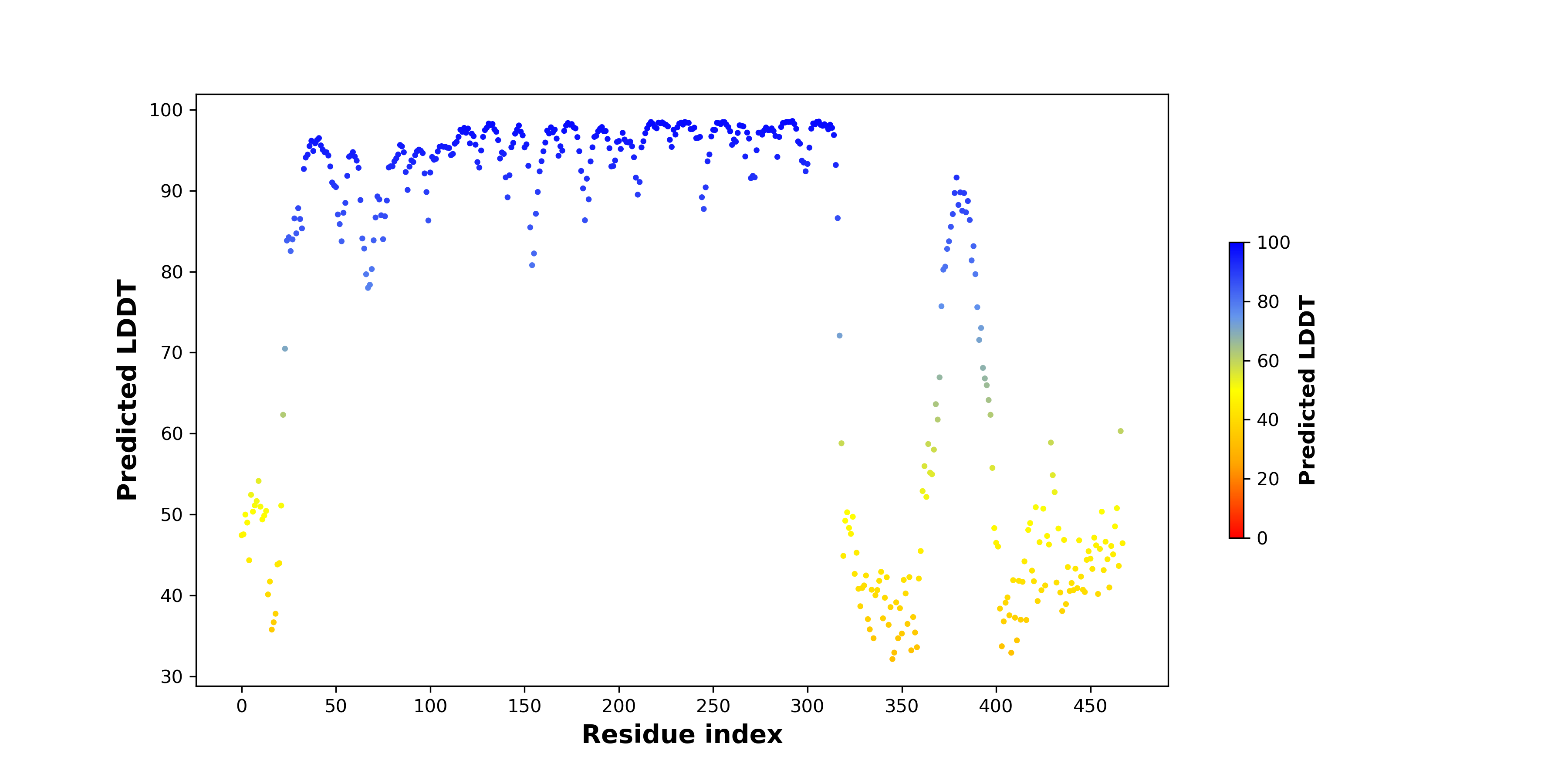 |
ATP8B2_pLDDT.png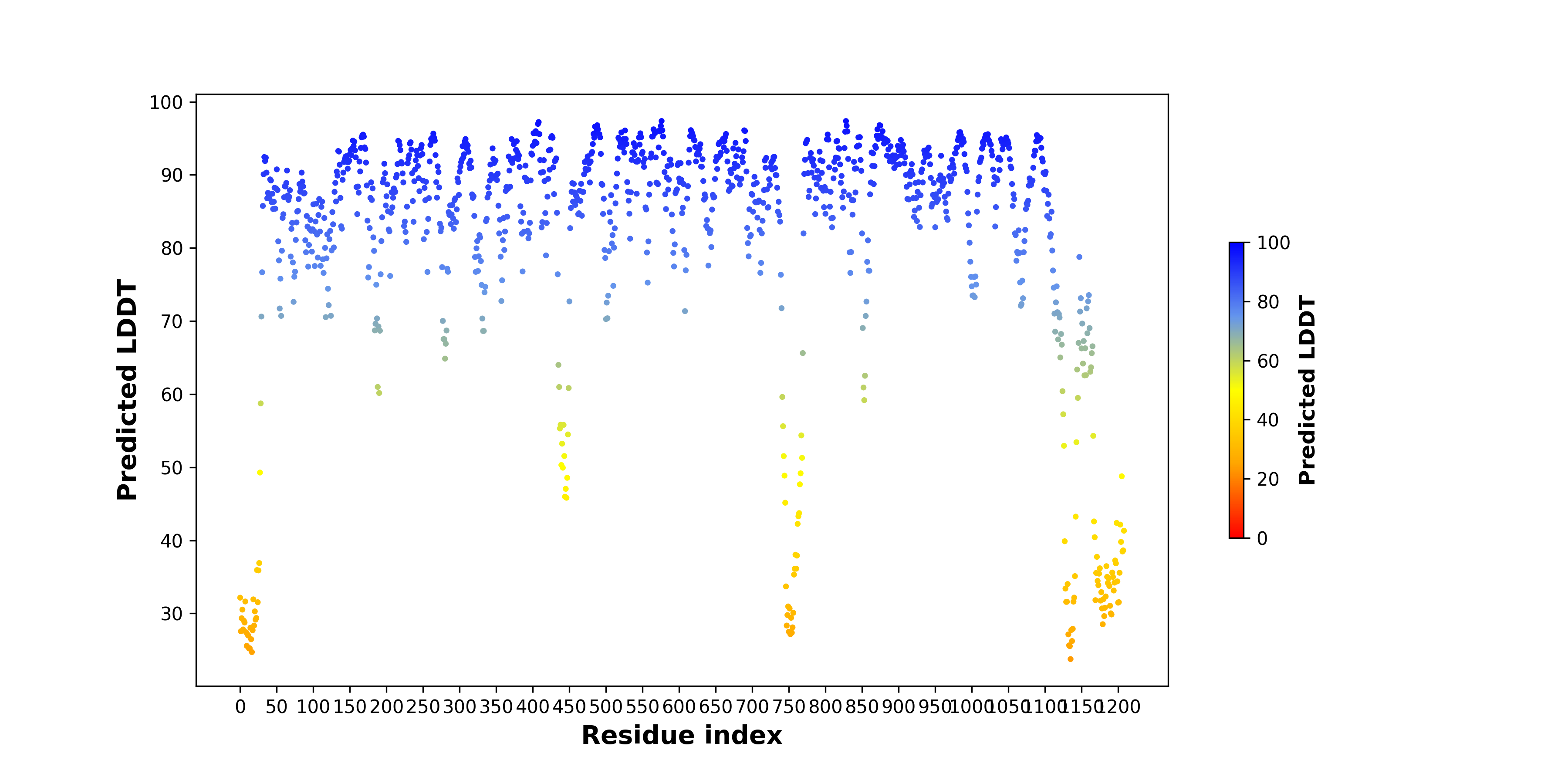 |
 pLDDT score distribution of the predicted fusion protein structures from AlphaFold2 pLDDT score distribution of the predicted fusion protein structures from AlphaFold2* AlphaFold produces a per-residue confidence score (pLDDT) between 0 and 100. |
Top |
Ramachandran Plot of Fusion Protein Structure |
 Ramachandran plot of the torsional angles - phi (φ)and psi (ψ) - of the residues (amino acids) contained in this fusion protein peptide. Ramachandran plot of the torsional angles - phi (φ)and psi (ψ) - of the residues (amino acids) contained in this fusion protein peptide. |
| Fusion AA seq ID in FusionPDB and their Ramachandran plots |
| IL6R_ATP8B2_596.png |
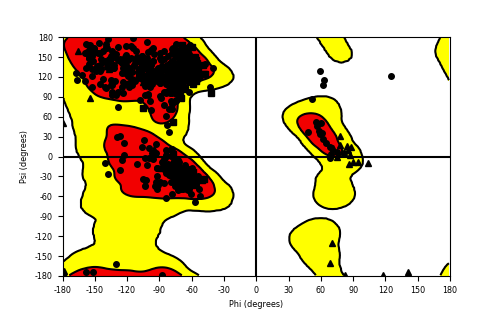 |
Top |
Potential Active Site Information |
 The potential binding sites of these fusion proteins were identified using SiteMap, a module of the Schrodinger suite. The potential binding sites of these fusion proteins were identified using SiteMap, a module of the Schrodinger suite. |
| Fusion AA seq ID in FusionPDB | Site score | Size | D score | Volume | Exposure | Enclosure | Contact | Phobic | Philic | Balance | Don/Acc | Residues |
| 596 | 1.043 | 206 | 1.021 | 483.287 | 0.495 | 0.762 | 0.975 | 0.706 | 1.154 | 0.612 | 0.828 | Chain A: 382,383,392,395,396,398,399,402,432,433,4 35,436,438,439,440,442,443,444,447,606,607,608,609 ,610,611,613,614,617,618,687,690,691,694,695,696,6 97,698,699 |
| 955 | 1.118 | 208 | 1.169 | 600.936 | 0.48 | 0.793 | 1.042 | 1.753 | 0.755 | 2.321 | 0.624 | Chain A: 47,50,51,54,55,382,383,396,398,399,400,40 1,402,403,404,405,407,408,432,435,436,439,440,443, 608,610,614,615,617,618,621,622,625,626,629,671,67 2,675,682,684,685,687,688,690,691,694,722 |
Top |
Potentially Interacting Small Molecules through Virtual Screening |
 The FDA-approved small molecule library molecules were subjected to virtual screening using the Glide. The FDA-approved small molecule library molecules were subjected to virtual screening using the Glide. |
| Fusion AA seq ID in FusionPDB | ZINC ID | DrugBank ID | Drug name | Docking score | Glide gscore |
Top |
 Drug information from DrugBank of the top 20 interacting small molecules. Drug information from DrugBank of the top 20 interacting small molecules. |
| ZINC ID | DrugBank ID | Drug name | Drug type | SMILES | Drug group |
Top |
Biochemical Features of Small Molecules |
 ADME (Absorption, Distribution, Metabolism, and Excretion) of drugs using QikProp(v3.9) ADME (Absorption, Distribution, Metabolism, and Excretion) of drugs using QikProp(v3.9) |
| ZINC ID | mol_MW | dipole | SASA | FOSA | FISA | PISA | WPSA | volume | donorHB | accptHB | IP | Human Oral Absorption | Percent Human Oral Absorption | Rule Of Five | Rule Of Three |
Top |
Drug Toxicity Information |
 Toxicity information of individual drugs using eToxPred Toxicity information of individual drugs using eToxPred |
| ZINC ID | Smile | Surface Accessibility | Toxicity |
Top |
Fusion Protein-Protein Interaction |
 Go to ChiPPI (Chimeric Protein-Protein interactions) to see the chimeric PPI interaction in Go to ChiPPI (Chimeric Protein-Protein interactions) to see the chimeric PPI interaction in |
 Protein-protein interactors with each fusion partner protein in wild-type from validated records (BIOGRID-3.4.160) Protein-protein interactors with each fusion partner protein in wild-type from validated records (BIOGRID-3.4.160) |
| Gene | PPI interactors |
| IL6R | IL6, CNTF, IL6ST, STAT3, ADRB2, TBCK, PPP1R21, MID1, C12orf4, CRYZL1, FANCB, FANCL, C17orf70, CETN2, COPRS, HNRNPL, SGTB, ATM, LCK, PIK3R3, TNF, FBXO2, PDDC1, |
 Protein-protein interactors based on sequence similarity (STRING) Protein-protein interactors based on sequence similarity (STRING) |
| Gene | STRING network |
| IL6R | 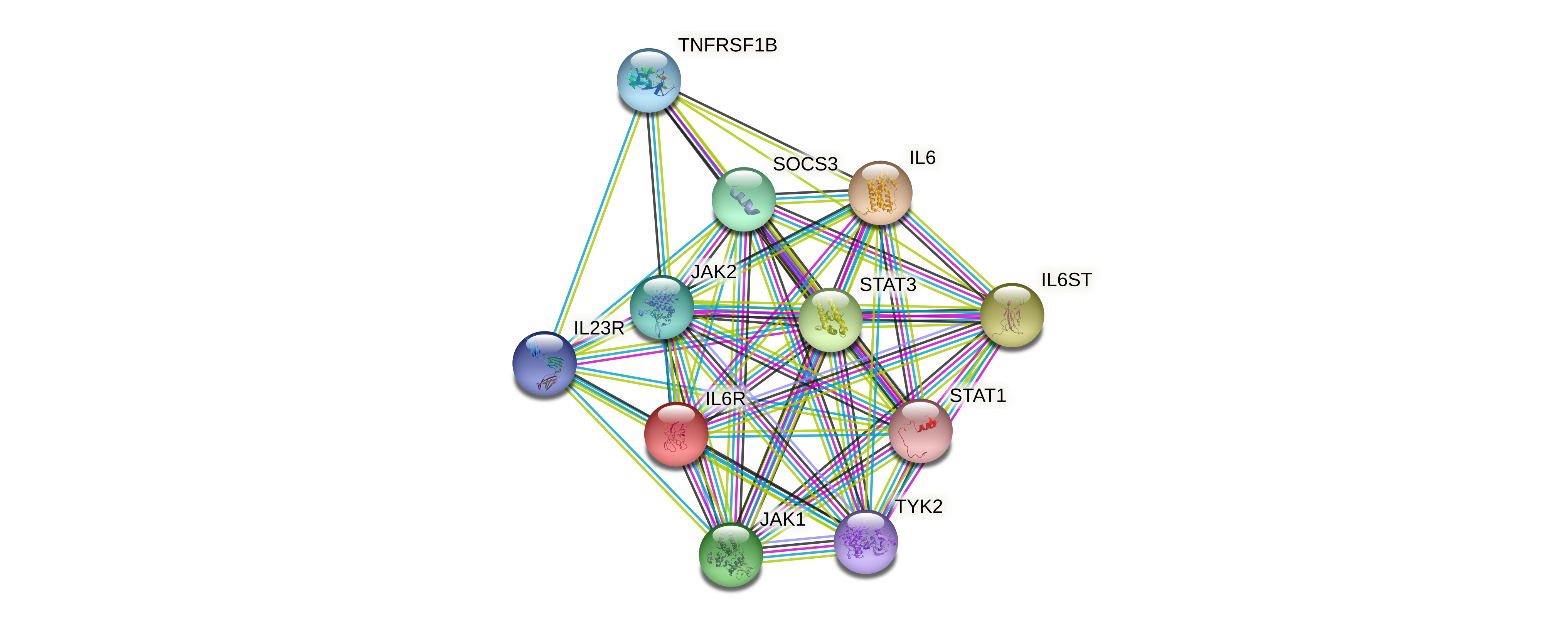 |
| ATP8B2 | 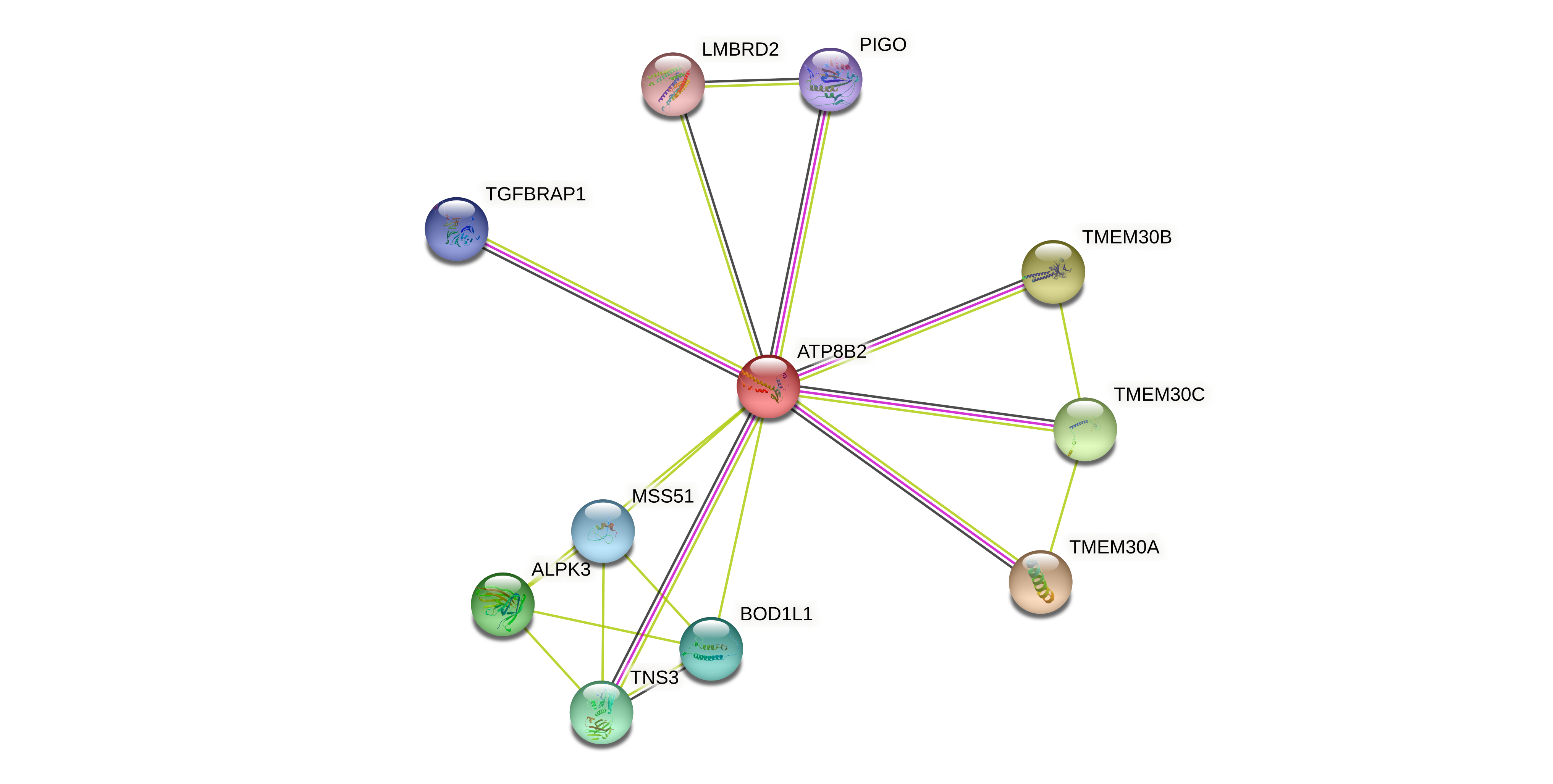 |
 - Retained interactions in fusion protein (protein functional feature from UniProt). - Retained interactions in fusion protein (protein functional feature from UniProt). |
| Partner | Gene | Hbp | Tbp | ENST | Strand | BPexon | TotalExon | Protein feature loci | *BPloci | TotalLen | Still interaction with |
 - Lost interactions due to fusion (protein functional feature from UniProt). - Lost interactions due to fusion (protein functional feature from UniProt). |
| Partner | Gene | Hbp | Tbp | ENST | Strand | BPexon | TotalExon | Protein feature loci | *BPloci | TotalLen | Interaction lost with |
Top |
Related Drugs to IL6R-ATP8B2 |
 Drugs used for this fusion-positive patient. Drugs used for this fusion-positive patient. (Manual curation of PubMed, 04-30-2022 + MyCancerGenome) |
| Hgene | Tgene | Drug | Source | PMID |
Top |
Related Diseases to IL6R-ATP8B2 |
 Diseases that have this fusion gene. Diseases that have this fusion gene. (Manual curation of PubMed, 04-30-2022 + MyCancerGenome) |
| Hgene | Tgene | Disease | Source | PMID |
 Diseases associated with fusion partners. Diseases associated with fusion partners. (DisGeNet 4.0) |
| Partner | Gene | Disease ID | Disease name | # pubmeds | Source |
| Hgene | IL6R | C0003873 | Rheumatoid Arthritis | 2 | CTD_human |
| Hgene | IL6R | C0001787 | Osteoporosis, Age-Related | 1 | CTD_human |
| Hgene | IL6R | C0004096 | Asthma | 1 | CTD_human |
| Hgene | IL6R | C0007131 | Non-Small Cell Lung Carcinoma | 1 | CTD_human |
| Hgene | IL6R | C0007134 | Renal Cell Carcinoma | 1 | CTD_human |
| Hgene | IL6R | C0011570 | Mental Depression | 1 | PSYGENET |
| Hgene | IL6R | C0011581 | Depressive disorder | 1 | PSYGENET |
| Hgene | IL6R | C0013595 | Eczema | 1 | GENOMICS_ENGLAND |
| Hgene | IL6R | C0024623 | Malignant neoplasm of stomach | 1 | CTD_human |
| Hgene | IL6R | C0029456 | Osteoporosis | 1 | CTD_human |
| Hgene | IL6R | C0029459 | Osteoporosis, Senile | 1 | CTD_human |
| Hgene | IL6R | C0036341 | Schizophrenia | 1 | CTD_human |
| Hgene | IL6R | C0038356 | Stomach Neoplasms | 1 | CTD_human |
| Hgene | IL6R | C0239998 | Recurrent infections | 1 | GENOMICS_ENGLAND |
| Hgene | IL6R | C0279702 | Conventional (Clear Cell) Renal Cell Carcinoma | 1 | CTD_human |
| Hgene | IL6R | C0751406 | Post-Traumatic Osteoporosis | 1 | CTD_human |
| Hgene | IL6R | C1266042 | Chromophobe Renal Cell Carcinoma | 1 | CTD_human |
| Hgene | IL6R | C1266043 | Sarcomatoid Renal Cell Carcinoma | 1 | CTD_human |
| Hgene | IL6R | C1266044 | Collecting Duct Carcinoma of the Kidney | 1 | CTD_human |
| Hgene | IL6R | C1306837 | Papillary Renal Cell Carcinoma | 1 | CTD_human |
| Hgene | IL6R | C1708349 | Hereditary Diffuse Gastric Cancer | 1 | CTD_human |

